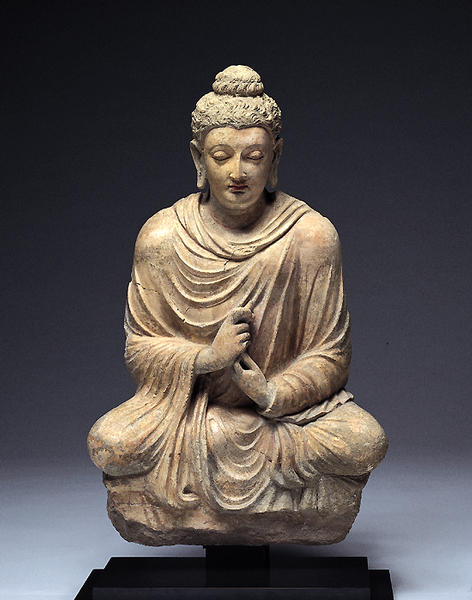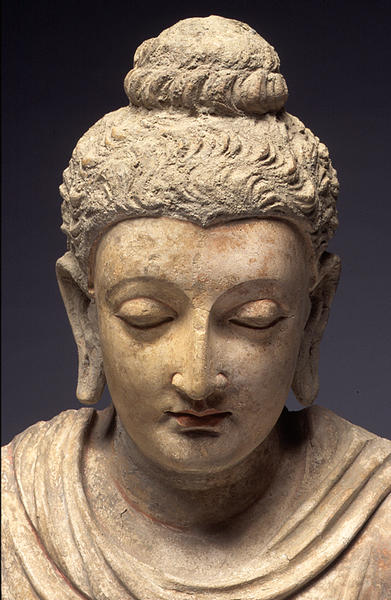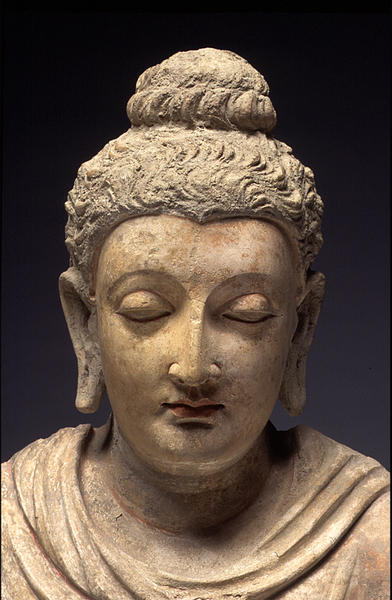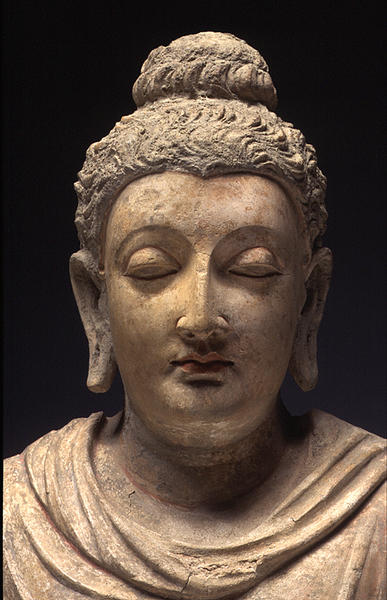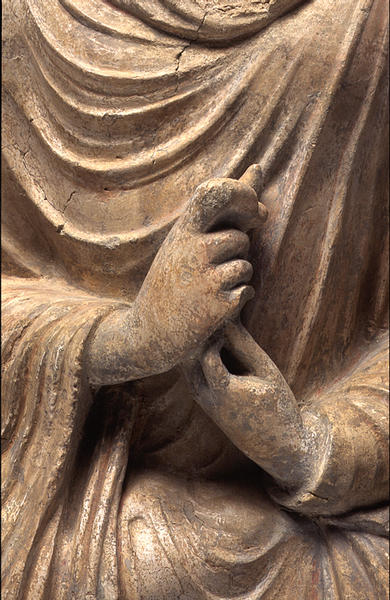Seated Buddha with Dharmachakra Mudra
- Hadda or Taxila
- 4th - 5th centuries
- Stucco with polychrome
- H-78
Catalogue Entry
This is a typical example of the molded stucco works that were popular during the late period of Gandharan art. The Buddha is seated and his hands are held in front of his lower torso with the thumbs and index fingers of both hands touching to form wheels, the other fingers lightly curled but leaving the palms showing, and the right hand placed above the left. This is called the gesture of turning the wheel (of the Law), or dharmachakra mudra, and represents the Buddha preaching. This mudra appears only on seated images. The figure's wavy long hair has been bound up on top of the head to form an ushnisha, and a variety of deep and shallow folds appear on the robe, which drapes across both shoulders. These elements are all based on the forms of stone sculptures from Gandhara. A comparison, however, with the standing stone Buddha image also in the Shumei collection (cat. no. 72) shows that the present image is clearly more naturalistic than its stone counterpart. Here, the balanced, intellectual facial features give a sense of a calm, lofty spirituality. The clay used for the face area is finer grained than that used on the head and robes, and it is apparent that the face was finished with a high-grade white clay. The urna is not modeled, but rather a cinnabar red circle has been drawn on the forehead; light black pigment can be discerned on the pupils of the eyes. In addition, green pigment remains on the ushnisha and on top of the eye sockets, while cinnabar remains on the hairlines, the upper edge of the eye-socket, the eyelids, the wings of the nose, the groove beneath the nose, the lips and the chin just beneath them, the neck lines, the lower edge of the neck band, and in various places on the drapery. It is not clear, however, whether this polychrome is original. One can also see traces of grey color in various areas of the hair and light green in the robe.
A large number of stucco sculptures has been excavated from Taxila to the east of Gandhara and from Hadda to the west, in present-day Afghanistan. The oldest stucco sculptures from the region are those excavated from the site of Sirkap in Taxila. Sirkap was constructed by Indo-Greeks at the beginning of the second century B.C. and was the capital of the region until the latter part of the first century A.D. These early works excavated in the area show a striking influence from Hellenistic art, and no Buddhist sculpture have been excavated. Schist was the primary sculptural medium in the region during the Kushan period (first-third century A.D.), and stucco came into wide use in the fourth and fifth centuries.*1 TK
1 For the most detailed reference for stuccos from Taxila and Hadda, Marshall 1951, Barthoux 1930.
